In the modern world, financial literacy is not a luxury—it is a necessity. Much like learning to read or drive, understanding the fundamentals of personal finance is crucial for navigating life’s complexities and achieving long-term security. However, for many, the world of money management, budgeting, and investing remains shrouded in confusion. This detailed guide, “Financial Education 101: The Basics Everyone Should Know,” aims to demystify personal finance, providing a clear roadmap to building a stable and prosperous financial future.
The Foundation: Why Financial Literacy Matters
Financial literacy is the ability to understand and effectively use various financial skills, including personal financial management, budgeting, and investing. It’s about having the knowledge and confidence to make smart decisions with your money.
A solid financial education empowers you to:
- Avoid Debt Traps: By understanding credit and interest, you can steer clear of high-interest debt that can derail your goals.
- Achieve Goals Faster: Whether it’s buying a house, funding an education, or retiring comfortably, financial knowledge provides the tools to plan and save effectively.
- Reduce Financial Stress: Clarity and control over your money significantly lower anxiety and improve overall well-being.
The journey starts with mastering a few core pillars.
Pillar 1: Budgeting – The Blueprint for Your Money
A budget is simply a spending plan that tracks your income and expenses over a set period. It is the single most important tool for gaining control of your money. Many people view budgeting as restrictive, but it is, in fact, liberating—it tells your money where to go instead of wondering where it went.
The Key Steps to Budgeting:
- Know Your Net Income: Start by determining exactly how much money you bring home after taxes and deductions. This is your foundation.
- Track Your Spending: For at least one to three months, log every single dollar you spend. This step is often the most revealing, as you identify “money leaks”—unnecessary or forgotten expenses like unused subscriptions or excessive take-out.
- Categorize and Allocate: Sort your expenses into categories:
- Needs (Essentials): Rent/Mortgage, utilities, food, essential transportation.
- Wants (Non-Essentials): Entertainment, dining out, hobbies, non-essential shopping.
- Savings/Debt Repayment: Emergency fund contributions, investment contributions, debt payments above the minimum.
- Choose a Method: Popular methods include:
- The 50/30/20 Rule: 50% for Needs, 30% for Wants, 20% for Savings/Debt Repayment.
- Zero-Based Budgeting: Income minus Expenses equals zero. Every dollar is assigned a job.
- The Envelope System: Using physical or digital envelopes to limit spending in variable categories like groceries and entertainment.
- Review and Adjust: A budget is a living document. Check in weekly or monthly and adjust categories as your life and goals evolve.
Pillar 2: Saving and Building an Emergency Fund
Saving is the act of setting aside a portion of your current income for future use. It is the bedrock of financial security.
The Non-Negotiable Emergency Fund
Before you focus on long-term investing, you must build an emergency fund. This is a pool of readily accessible cash (typically in a High-Yield Savings Account, or HYSA) intended to cover unexpected financial shocks like job loss, medical emergencies, or major car repairs.
Goal: Aim to save three to six months’ worth of essential living expenses. If you are self-employed or have an unstable income, aim for closer to nine to twelve months. Automate transfers to this fund immediately after you get paid—the “Pay Yourself First” principle.
Setting Financial Goals (Short, Medium, Long-Term)
Savings should be tied to goals, which helps with motivation:
- Short-Term (1-3 years): Vacation, new computer, down payment on a car. Keep this money safe and accessible in an HYSA.
- Medium-Term (3-10 years): Down payment on a house, wedding expenses, large home renovation. You might consider slightly more aggressive, low-risk investments here.
- Long-Term (10+ years): Retirement, child’s college fund. This is where investing takes center stage.
Pillar 3: Managing Debt and Credit Wisely
Debt is a powerful tool, but like any tool, it can be dangerous if mishandled. Good debt (like a mortgage) typically funds an asset that appreciates or generates income, while bad debt (like high-interest credit card debt) funds a depreciating item.
Understanding Credit
Your credit score is your financial reputation. It determines your ability to borrow money and influences the interest rate you will pay on loans (mortgages, car loans, etc.). A good score opens doors and saves you thousands over your lifetime.
Key Factors of Your Credit Score (FICO/VantageScore):
- Payment History (Most Important): Pay all bills on time, every time.
- Amounts Owed (Credit Utilization): Keep your credit card balances low—ideally below 30% of your total available credit, but even better below 10%.
- Length of Credit History: The longer, the better.
- New Credit: Avoid opening too many new accounts in a short period.
- Credit Mix: Having a healthy mix of different types of credit (credit cards, installment loans) is beneficial.
Strategies for Debt Repayment
Focus on paying off the highest-interest debt first. Two popular methods are:
- Debt Avalanche: Tackle the debt with the highest interest rate first, regardless of the balance. This saves you the most money in interest over time.
- Debt Snowball: Pay off the debt with the smallest balance first to build momentum and psychological wins.
Pillar 4: The Power of Investing
Investing is putting your money to work to earn a return. It is the path to building true long-term wealth, largely thanks to the principle of Compounding.
Understanding Compounding
Compounding is the process of earning returns on both your initial investment and the accumulated returns from previous periods. In simple terms, your money earns money, and then that new money starts earning money, too. The key is to start early, as time is your biggest asset in the world of investing.
Where to Start Investing:
- Retirement Accounts (Tax-Advantaged): These should be your first priority.
- 401(k) / Employer Plan: If your company offers a match, contribute at least enough to get the full match—it’s free money.
- IRA (Individual Retirement Account) / Roth IRA: These offer tax benefits that allow your money to grow largely unburdened by annual tax payments.
- Diversification: Never put all your eggs in one basket. Diversify your investments across different asset classes (stocks, bonds, real estate) and, within stocks, across various sectors and geographies. Index funds or ETFs (Exchange-Traded Funds) are excellent low-cost, diversified options for beginners.
- Risk Tolerance: Understand how much risk you are comfortable with. Young investors with a long time horizon can generally afford to take on more risk (more stocks), while those nearing retirement should favor lower-risk assets (more bonds).
Pillar 5: Protection and Contingency Planning
The final pillar is about protecting the wealth you are building. Life is unpredictable, and insurance is your financial safety net.
Essential Types of Insurance:
- Health Insurance: Crucial for protecting your assets from catastrophic medical bills.
- Auto Insurance: Required by law in most places and protects you from financial ruin in an accident.
- Home/Renters Insurance: Protects your largest assets (or your belongings) from damage or theft.
- Life Insurance (Especially for Dependents): Provides financial security for your loved ones if you pass away prematurely.
Estate Planning Basics
While often overlooked, basic estate planning is essential:
- Will: A legal document stating how your assets should be distributed after your death.
- Beneficiaries: Ensure your retirement and bank accounts have designated beneficiaries, as this overrides a Will in many cases.
Conclusion: Take Control Today
Financial education is a continuous process, not a one-time course. By mastering these five basic pillars—Budgeting, Saving, Managing Debt and Credit, Investing, and Protection—you lay the groundwork for a secure and prosperous life.
The most powerful step you can take is the first one. Start tracking your spending, set up an automatic transfer to your emergency fund, and begin exploring tax-advantaged retirement accounts. Financial independence is not about how much you earn; it’s about how much you keep and how wisely you make it grow. Take control of your money, and you take control of your future.



